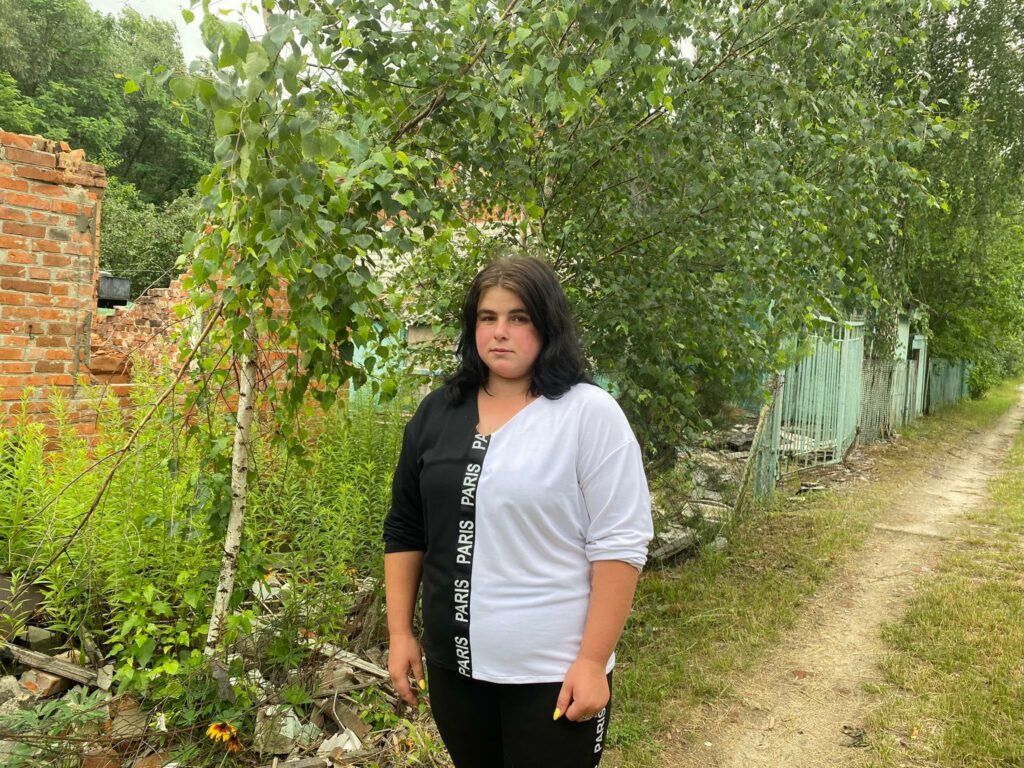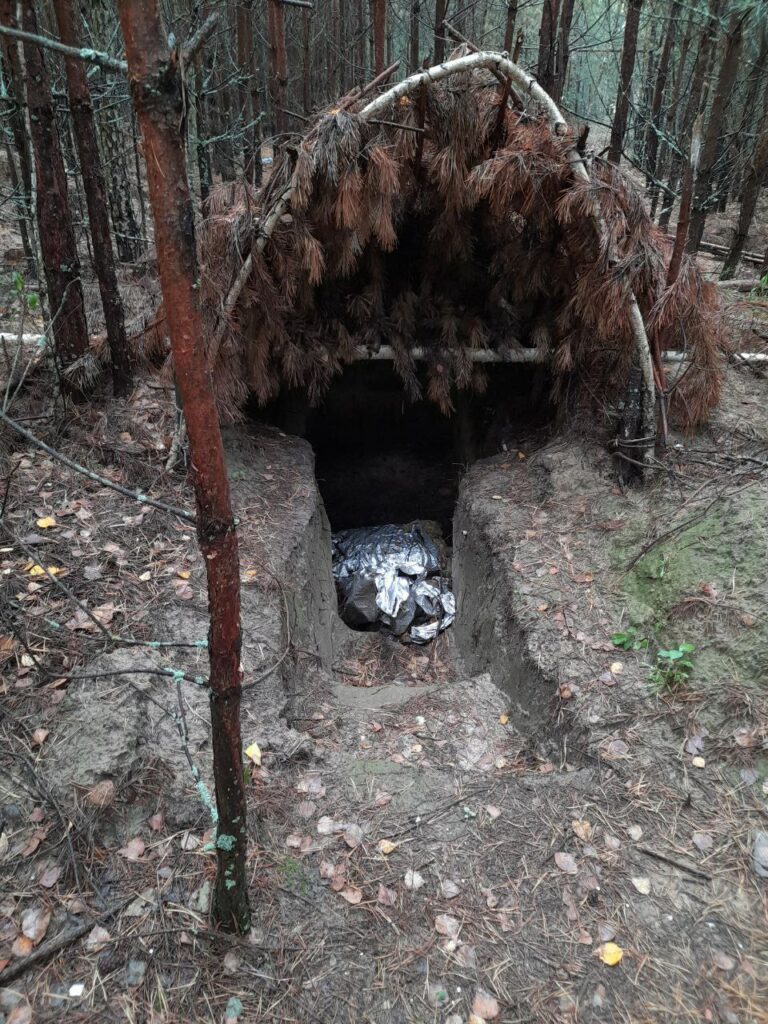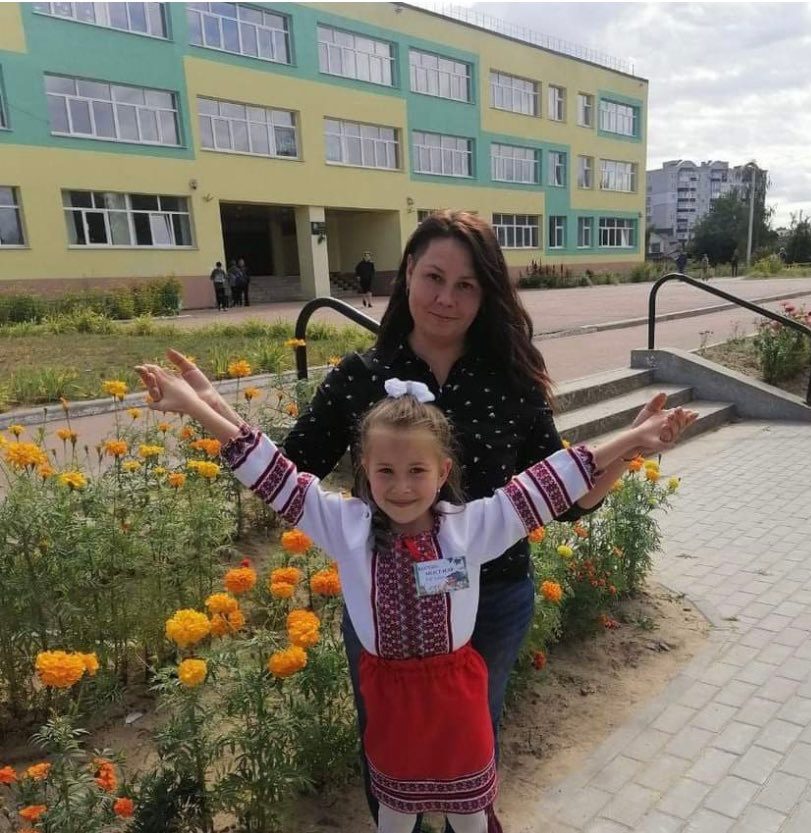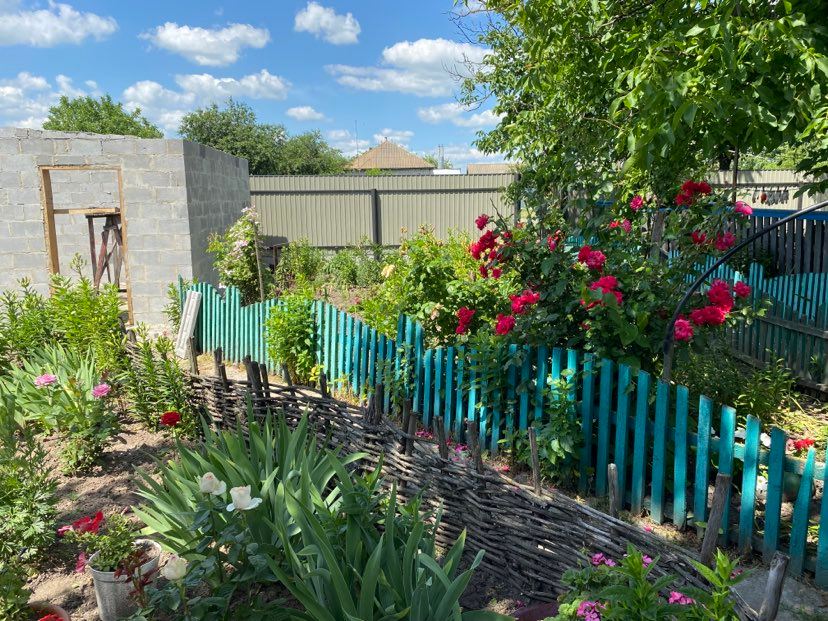On the first day of the war, Russian troops advanced through the territory of Chernihiv quite rapidly. On learning about an outbreak of a large-scale war, many local people preferred to live through the war in the countryside rather than in a big city. That’s why they tried to leave Chernihiv.
But sometimes it happened that, fleeing from hostilities, they found themselves in the line of fire as the AFU valiantly defended the approaches to Chernihiv from the first day, understanding its strategic importance in the enemy’s plans.
A small village of Ryzhyky near Chernihiv is one of those where hostilities began on the first day and lasted more than a month. A local resident and a woman from Chernihiv, who came to Ryzhyky on February 24, shared their stories.
There was hardly a quiet day during the 35 days of the occupation
Snizhana Bakun is a 19-year-old student who lives in Ryzhyky with her family. On the morning of February 24, she woke up to the sound of her mobile – her friends called to say the war had begun. Her mother said she could hear explosions somewhere close. Russian troops were approaching the village, which was in the line of fire due to its proximity to Chernihiv.

There was heavy shelling on February 27. The girl says she had the impression that the enemies were firing at everything indiscriminately. One of the shells exploded in their garden close to the house.
“The windows in the house were shaking. There was a three-liter jar of milk on the fridge and half of it spilled out. The house was a mess – things had fallen on the floor. At first, we hid in our cellar, and then we moved to our friends’, where it was a little calmer and safer,” says Snizhana. Her parents’ homestead is at a crossroads through which enemy vehicles moved incessantly.
The girl admits that there was hardly a quiet day during the 35 days of the occupation. She and her parents lived at their friends’ for a large part of the occupation. They spent the night there and returned home during the day, as they had to take care of the cattle. “We didn’t spend nights in cellars, but we often hid there,” she says.
One day, the people in the cellar, where Snizhana and her family were hiding, heard the gate open noisily. They heard someone saying in Russian that it was locked and they had to break the door. Then – a burst of gunfire at every window of the house. Snizhana says she will never forget those sounds and that taste of fear, when you have no idea what the invaders can do next.
The ruscists did not go down to the cellar, although they seemed to be looking for someone. People stayed in their hiding place until late in the evening and were afraid to come out. When they entered the house, they saw everything in a mess – open cabinets, a shot through clock. Uninvited guests had walked on the beds. The house with broken windows immediately cooled down. After that incident, Snizhana and her family went to other neighbors’ cellars.

Ruscists constantly drove tanks or “tigers” to their deployment and back through the village. There are still trenches and fortifications there, even with potbelly stoves, but the locals are afraid to go to there.
“There was not a single calm day. They moved towards the village of Mokhnatyn or the highway (Chernihiv-Homel – Author). Sometimes 15 vehicles moved forward, but only 5 returned. They were gradually destroyed by the Ukrainian military,” Snizhana Bakun notes.
Ruscists could drive along the roads, but they deliberately damaged local people’s fences. Even now quite a few gates and fences in the village have traces of caterpillars. During the occupation, people tried not to go out without necessity. If they had to go somewhere, they went through the gardens, because there were cases when men went to feed cattle and disappeared.
The occupiers would sometimes go to the villagers and take their chickens. Snizhana says that one day they decided to slaughter a pig and were afraid that ruscists might take away the meat. But when they roasted the carcass, they put a lot of straw, and the passing ruscists thought it was just an ordinary fire. So they drove on.
Not being able to go anywhere, the residents of Ryzhyky experienced problems with food and hygiene products, but it was worse for people living in dachas. Snizhana says that everyone tried to share and help those who needed it. The girl conducts a mini-tour of the village, shows a burnt house in the Ryzhyky dacha community, where a shell hit.
During the occupation, the villagers lived without electricity, and therefore without water supply. However, there was gas, which made their life a little easier. Once Snizhana was giving water to the poultry holding a ladle with water, when a russian soldier came up to her and asked her for a drink. She said that the water was not quite drinkable, because the pump did not work due to the lack of power supply. The soldier told her to drink it, but he himself refused to drink the water.
According to Snizhana, the Russians left just as suddenly as they appeared. There were Russians, Kadyrovites, and Buryats in the village in one month. Their military intelligence stayed in the village until the last day. They left the village in two convoys: one included more than 20 tanks, another – less than 20. As they drove, the house seemed to tremble to its foundation.
The next day, the AFU soldiers entered Ryzhyky. “The arrival of the Ukrainian military was so exhilarating. And now we are happy about our successes at the front and look forward to victory,” the girl concluded. The “russian world” left a tank in the village, and the Ukrainian military took it for their needs.
They survived as best they could
Tetiana Lypovka from Chernihiv and her family spent more than a month close to the line of fire. At night, the young woman learnt about the advance of russian troops from her military friends.

Tetiana and her husband decided to leave Chernihiv. Their plan was to go further – to take some food in Ryzhyky, where they have a dacha, and to go to their friends in a village near the Belarusian border. She left the city with her husband, brother, student son, 6-year-old niece and two children of a friend. Tetiana’s parents and another brother stayed in Chernihiv. But along the way, their bus broke down, so the family had to stay in their dacha in the village, near which the fighting had already begun.
“We hid in our cellar, but it was not very good for that. Pieces of the ceiling began to fall down because of explosions. The neighbor asked us to her place. We spent 9 very difficult days there, hardly going outside. We ate lard, bread and raw eggs,” Tetiana recalls.
Enemy vehicles constantly moved through the village, with a few hours breaks. The adversary chose an area between Ryzhyky and Desnianske as a place of deployment.
According to Tetiana Lypovka, newcomers ran out of food, because no one expected to live in the dachas for a long time. But local residents helped as much as they could. Tetiana is a hairdresser, so on “quieter” days she cut locals’ hair, and they shared food with her. Later, the family adapted a little and even managed to cook something between the shelling. They adapted to living without electricity and with limited communication.
Every day at 6:15 an enemy reconnaissance vehicle drove by: an armored car and an armored personnel carrier. Locals noticed: if they moved to the village, it would be quiet in the near future; if they moved from the village, they had to hide in the cellar as soon as possible. The most dangerous day was when, driving along the streets, the russian soldiers shot at their house and car. A bullet flew five centimeters from the fuel tank. If it had hit, the car could have exploded and burned.
Tetiana’s brother made a radio that worked on solar batteries. It provided a connection with the world, an opportunity to find out what was going on and hope for liberation. The car battery was used to charge a phone and light a lamp. They also used candlelight in the cellar where they were hiding.

A kid learned to live in the war conditions. Nastya was able to distinguish by the sounds what could fly and where from. Air bombardment was the scariest experience. The sounds of explosions reached even Ryzhyky. Even after de-occupation of the Chernihiv region, the girl slept restlessly, because fears of constant shelling remained in her subconscious. In a relatively peaceful time, she could wake up from a sound, for example, of an air heater or a fan, and say: “Tanya, a plane is flying.”
After the AFU arrival and de-occupation, the residents of Ryzhyky are gradually rebuilding the damaged fences and houses. Thanks to the Ukrainian military, who liberated the village in early April, people were able to plant gardens, to grow crops and even harvest a new crop.
Some people, like Tetiana Lypovka, were able to return to the city to their usual life or even start a new page. Like little Nastya, who became a schoolgirl this September and went to the 1st grade. Or Snizhana Bakun, who married her fiancé Ruslan.

Iryna Synelnyk, Chernihiv
14.09.2022



